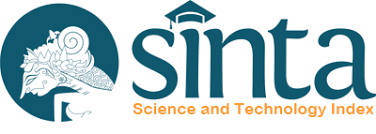KEMASAN BERDAYA JUAL BERBASIS IDENTITAS LOKAL UNTUK MENINGKATKAN DAYA TARIK PRODUK UMKM KULINER DI DESA WISATA CIBEBER, PURWAKARTA
Sari
ABSTRAK
Penelitian ini bertujuan untuk merancang dan memvalidasi strategi kemasan berdaya jual bagi UMKM kuliner di Desa Cibeber, Purwakarta, guna meningkatkan minat beli wisatawan, memperkuat persepsi kualitas produk, dan mendukung citra desa wisata. Metode penelitian menggunakan pendekatan kualitatif dengan studi kasus, melibatkan 8–10 pelaku UMKM. Data dikumpulkan melalui wawancara semi-terstruktur, observasi, dan dokumentasi foto, serta dianalisis menggunakan analisis tematik. Hasil penelitian menunjukkan bahwa desain kemasan mayoritas masih sederhana, didominasi warna netral, tipografi standar, dan minim identitas budaya lokal. Label produk umumnya tidak memuat informasi lengkap seperti komposisi, nilai gizi, dan sertifikasi halal resmi, sementara material kemasan lebih dipilih berdasarkan harga murah dibandingkan aspek keberlanjutan. Hambatan utama meliputi keterbatasan anggaran, rendahnya literasi desain, dan minimnya akses ke pemasok berkualitas. Penelitian ini menegaskan pentingnya integrasi elemen visual khas lokal, label informatif sesuai regulasi, material ramah lingkungan yang fungsional, serta dukungan pelatihan dan kebijakan. Kesimpulan penelitian menyoroti perlunya strategi kemasan yang terintegrasi untuk daya saing UMKM. Saran penelitian selanjutnya adalah melakukan uji kuantitatif dan eksperimen pasar terhadap prototipe kemasan untuk validasi efektivitasnya di berbagai konteks desa wisata.
Kata Kunci: kemasan berdaya jual, UMKM kuliner, identitas lokal, keberlanjutan
ABSTRACT
This study aims to design and validate a marketable packaging strategy for culinary MSMEs in Cibeber Village, Purwakarta, to increase tourist purchase intention, strengthen product quality perception, and support the image of the tourism village. The research employed a qualitative approach with a case study method, involving 8–10 MSME actors. Data were collected through semi-structured interviews, observations, and photographic documentation, and analyzed using thematic analysis. The findings reveal that most packaging designs remain simple, dominated by neutral colors, standard typography, and minimal representation of local cultural identity. Product labels generally lack complete information such as composition, nutritional values, and official halal certification, while packaging materials are often chosen based on low cost rather than sustainability considerations. The main constraints include limited budgets, low design literacy, and minimal access to quality suppliers. This study emphasizes the importance of integrating distinctive local visual elements, informative labels in compliance with regulations, functional eco-friendly materials, and the support of training and policy. The conclusion highlights the need for an integrated packaging strategy to enhance MSME competitiveness. Future research is suggested to conduct quantitative testing and market experiments on packaging prototypes to validate their effectiveness across various tourism village contexts.
Keywords: marketable packaging, culinary MSMEs, local identity, sustainability
Kata Kunci
Teks Lengkap:
PDFReferensi
Aaker, D. A. (1996). Building strong brands. Mumbai, India: Free Press.
Azmi, H. N., Nugraha, N. D., & Soedewi, S. (2024). Perancangan Desain Kemasan Potensi Wisata Kuliner Desa Nagreg Kendan Kabupaten Bandung. e-Proceeding of Art & Design, 11(4), 5837-5856.
Bonne, K., & Verbeke, W. (2007). Religious values informing halal meat production and the control and delivery of halal credence quality. Agriculture and Human Values, 25(1), 35-47. DOI:10.1007/s10460-007-9076-y
Brown, T., & Wyatt, J. (2010). Design thinking for social innovation. Stanford Social Innovation Review, 8(1), 31–35. https://ssir.org/articles/entry/design_thinking_for_social_innovation
Darmawan, F. M. G., & Faturrohman, M. S. (2023). he Impact of Awareness, Certification, and Quality of Halal Food on Consumer Purchase Intentions at Asia Kintan Buffet Restaurant. Jurnal Ekonomi Syariah Teori dan Terapan, 10(2), 177-187. DOI: 10.20473/vol10iss20232
Kartika, G. A., Bakti, I., & Budiana, H. R. (2024). Message Packaging Through Data-Driven Storytelling in Food Rescue Efforts (Instagram Descriptive Study @Foodbankbandung by Food Bank Bandung). Journal of Social Science, 1(3), 172–180. https://doi.org/10.61796/ijss.v1i3.24
Kuvykaite, R., Dovaliene, A. and Navickiene, L. (2009) Impact of Package Elements on Consumer’s Purchase Decision. Economics & Management, 14, 441-447.
Magnier, L., Schoormans, J. P. L., & Mugge, R. (2016). Judging a product by its cover: Packaging sustainability and perceptions of quality in food products. Food Quality and Preference, 53, 132-142. DOI:10.1016/j.foodqual.2016.06.006
Mahri, A. J. W., Gelda, I., Juliana, J., Cahkyaneu, A., & Rusydiana, A. S. (2024). Halal Certification Strategy in The Development of Small and Medium Industries. JEBIS: Journal of Islamic Economics and Busines, 10(2), 336-362. doi: 10.20473/jebis.v10i2.60491
Mudgal, D., Pagone, E., & Salonitis, K. (2024). Selecting sustainable packaging materials and strategies: A holistic approach considering whole life cycle and customer preferences. Journal of Cleaner Production, 481, 144133. https://doi.org/10.1016/j.jclepro.2024.144133
Ningsih, E. N., Surbakti, H., Indriani, D. P., & Agussalim. (2024). Peningkatan Produktivitas Pemasaran UMKM di Desa Sungsang II Melalui Peningkatan Kemasan Produk. Jurnal Pengabdian Kepada Masyarakat Tabikpun, 5(2), 163-170. DOI: 10.23960/jpkmt.v5i2.162
Orth, U. R., & Malkewitz, K. (2008). Holistic package design and consumer brand impressions. Journal of Marketing, 72(3), 64–81. https://doi.org/10.1509/jmkg.72.3.64
Porter, M. E. (1985). Competitive advantage: Creating and sustaining superior performance. Mumbai, India: Free Press.
Silayoi, P., & Speece, M. (2017). The importance of packaging attributes: A conjoint analysis approach. European Journal of Marketing, 41(11/12), 1495–1517. https://doi.org/10.1108/03090560710821279
Sorna, U. S., Firdaus, R. B. R. (2024). Challenges and ways forward for the Malaysian SMEs in the Halal food industry: a systematic review. Potravinarstvo, 18, 223-238. DOI:10.5219/1937
Sucipto, S., Hidayati, L., Perdani, C. G., & Hasanah, N. (2021). Traceability of Halal Control Point in Material, Production, and Serving to Support Halal Certification in Universitas Brawijaya Canteen. Indonesian Journal of Halal Research, 3(2), 75-86. DOI: 10.15575/ijhar.v3i2.11401
Wang, E. S. T. (2013). The influence of visual packaging design on perceived food product quality, value, and brand preference. International Journal of Retail & Distribution Management. 41(10), 805–816. https://doi.org/10.1108/IJRDM-12-2012-0113
Widyamurti, N. (2018). Pemasaran Pariwisata Melalui Kemasan Produk Ukm Standing Pouch Berbahan Paper Metal di Era Ekonomi Kreatif. Jurnal Industri Kreatif dan Kewirausahaan, 1(1), 1-9. https://jurnal.usahid.ac.id/index.php/kewirausahaan/article/view/138?utm_source=chatgpt.com
Wulandari, R. H., & Ghofar, A. (2025). Pengaruh Desain Kemasan dan Desain Produk Serta Kualitas Pelayanan Terhadap Perilaku Konsumen Dalam Menentukan Niat Pembelian Ulang Pada Cv. Omochatoys. EKOMA Jurnal Ekonomi Manajemen Akuntansi, 4(4), 6962-6968. DOI:10.56799/ekoma.v4i4.8569
Zhang, Q. (2022). Innovative path of tourism product packaging design based on cultural sense. Frontiers in Art Research, 4(2), 56–62. https://doi.org/10.25236/FAR.2022.040211
DOI: https://doi.org/10.31294/par.v12i2.27165










